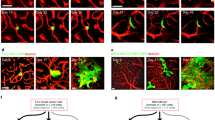Abstract
The cytoskeletal organization of detached and circulating tumor cells (CTCs) is currently not well defined and may provide potential targets for new therapies to limit metastatic tumor spread. In vivo, CTCs reattach in distant tissues by a mechanism that is tubulin-dependent and suppressed by polymerized actin. The cytoskeletal mechanisms that promote reattachment of CTCs match exactly with the mechanisms supporting tubulin microtentacles (McTN), which we have recently identified in detached breast tumor cells. In this study, we aimed to investigate how McTN formation is affected by the microtubule-associated protein, tau, which is expressed in a subset of chemotherapy-resistant breast cancers. We demonstrate that endogenous tau protein localizes to McTNs and is both necessary and sufficient to promote McTN extension in detached breast tumor cells. Tau-induced McTNs increase reattachment of suspended cells and retention of CTCs in lung capillaries. Analysis of patient-matched primary and metastatic tumors reveals that 52% possess tau expression in metastases and 26% display significantly increased tau expression over disease progression. Tau enrichment in metastatic tumors and the ability of tau to promote tumor cell reattachment through McTN formation support a model in which tau-induced microtubule stabilization provides a selective advantage during tumor metastasis.
This is a preview of subscription content, access via your institution
Access options
Subscribe to this journal
Receive 50 print issues and online access
$259.00 per year
only $5.18 per issue
Buy this article
- Purchase on Springer Link
- Instant access to full article PDF
Prices may be subject to local taxes which are calculated during checkout






Similar content being viewed by others
Abbreviations
- CTC:
-
circulating tumor cell
- ECM:
-
extracellular matrix
- LA:
-
latrunculin-A
- MAP:
-
microtubule-associated protein
- McTN:
-
microtentacle
- NSC:
-
non-silencing control
- Taxol:
-
paclitaxel
- TMA:
-
tissue microarray
- VC:
-
vehicle control
References
Atienza JM, Yu N, Kirstein SL, Xi B, Wang X, Xu X et al. (2006). Dynamic and label-free cell-based assays using the real-time cell electronic sensing system. Assay Drug Dev Technol 4: 597–607.
Balzer EM, Whipple RA, Cho EH, Matrone MA, Martin SS . (2009). Antimitotic chemotherapeutics promote adhesive responses in detached and circulating tumor cells. Breast Cancer Res Treat (e-pub ahead of print 11 July 2009)
Bhat KM, Setaluri V . (2007). Microtubule-associated proteins as targets in cancer chemotherapy. Clin Cancer Res 13: 2849–2854.
Bulic B, Pickhardt M, Schmidt B, Mandelkow EM, Waldmann H, Mandelkow E . (2009). Development of tau aggregation inhibitors for Alzheimer's disease. Angew Chem Int Ed Engl 48: 1740–1752.
Camara O, Rengsberger M, Egbe A, Koch A, Gajda M, Hammer U et al. (2007). The relevance of circulating epithelial tumor cells (CETC) for therapy monitoring during neoadjuvant (primary systemic) chemotherapy in breast cancer. Ann Oncol 18: 1484–1492.
Cassimeris L, Spittle C . (2001). Regulation of microtubule-associated proteins. Int Rev Cytol 210: 163–226.
Chen J, Kanai Y, Cowan NJ, Hirokawa N . (1992). Projection domains of MAP2 and tau determine spacings between microtubules in dendrites and axons. Nature 360: 674–677.
Dickey CA, Ash P, Klosak N, Lee WC, Petrucelli L, Hutton M et al. (2006). Pharmacologic reductions of total tau levels; implications for the role of microtubule dynamics in regulating tau expression. Mol Neurodegener 1: 6.
Drubin DG, Feinstein SC, Shooter EM, Kirschner MW . (1985). Nerve growth factor-induced neurite outgrowth in PC12 cells involves the coordinate induction of microtubule assembly and assembly-promoting factors. J Cell Biol 101: 1799–1807.
Engel LW, Young NA, Tralka TS, Lippman ME, O'Brien SJ, Joyce MJ . (1978). Establishment and characterization of three new continuous cell lines derived from human breast carcinomas. Cancer Res 38: 3352–3364.
Gazdar AF, Kurvari V, Virmani A, Gollahon L, Sakaguchi M, Westerfield M et al. (1998). Characterization of paired tumor and non-tumor cell lines established from patients with breast cancer. Int J Cancer 78: 766–774.
Goedert M . (2004). Tau protein and neurodegeneration. Semin Cell Dev Biol 15: 45–49.
Haier J, Nicolson GL . (2001). Tumor cell adhesion under hydrodynamic conditions of fluid flow. Apmis 109: 241–262.
Hall A . (2009). The cytoskeleton and cancer. Cancer Metastasis Rev 28: 5–14.
Husemann Y, Geigl JB, Schubert F, Musiani P, Meyer M, Burghart E et al. (2008). Systemic spread is an early step in breast cancer. Cancer Cell 13: 58–68.
Ingber DE . (2003). Tensegrity I Cell structure and hierarchical systems biology. J Cell Sci 116: 1157–1173.
Janmey PA, Euteneuer U, Traub P, Schliwa M . (1991). Viscoelastic properties of vimentin compared with other filamentous biopolymer networks. J Cell Biol 113: 155–160.
Janni W, Rack B, Schindlbeck C, Strobl B, Rjosk D, Braun S et al. (2005). The persistence of isolated tumor cells in bone marrow from patients with breast carcinoma predicts an increased risk for recurrence. Cancer 103: 884–891.
Knops J, Kosik KS, Lee G, Pardee JD, Cohen-Gould L, McConlogue L . (1991). Overexpression of tau in a nonneuronal cell induces long cellular processes. J Cell Biol 114: 725–733.
Korb T, Schluter K, Enns A, Spiegel HU, Senninger N, Nicolson GL et al. (2004). Integrity of actin fibers and microtubules influences metastatic tumor cell adhesion. Exp Cell Res 299: 236–247.
Lee G, Rook SL . (1992). Expression of tau protein in non-neuronal cells: microtubule binding and stabilization. J Cell Sci 102 (part 2): 227–237.
Levy SF, Leboeuf AC, Massie MR, Jordan MA, Wilson L, Feinstein SC . (2005). Three- and four-repeat tau regulate the dynamic instability of two distinct microtubule subpopulations in qualitatively different manners. Implications for neurodegeneration. J Biol Chem 280: 13520–13528.
McGrogan BT, Gilmartin B, Carney DN, McCann A . (2008). Taxanes, microtubules and chemoresistant breast cancer. Biochim Biophys Acta 1785: 96–132.
Mialhe A, Lafanechere L, Treilleux I, Peloux N, Dumontet C, Bremond A et al. (2001). Tubulin detyrosination is a frequent occurrence in breast cancers of poor prognosis. Cancer Res 61: 5024–5027.
Panda D, Samuel JC, Massie M, Feinstein SC, Wilson L . (2003). Differential regulation of microtubule dynamics by three- and four-repeat tau: implications for the onset of neurodegenerative disease. Proc Natl Acad Sci USA 100: 9548–9553.
Pusztai L, Jeong JH, Gong Y, Ross JS, Kim C, Paik S et al. (2009). Evaluation of microtubule-associated protein-Tau expression as a prognostic and predictive marker in the NSABP-B 28 randomized clinical trial. J Clin Oncol 27: 4287–4292.
Remmerbach TW, Wottawah F, Dietrich J, Lincoln B, Wittekind C, Guck J . (2009). Oral cancer diagnosis by mechanical phenotyping. Cancer Res 69: 1728–1732.
Rosenberg KJ, Ross JL, Feinstein HE, Feinstein SC, Israelachvili J . (2008). Complementary dimerization of microtubule-associated tau protein: Implications for microtubule bundling and tau-mediated pathogenesis. Proc Natl Acad Sci USA 105: 7445–7450.
Rouzier R, Rajan R, Wagner P, Hess KR, Gold DL, Stec J et al. (2005). Microtubule-associated protein tau: a marker of paclitaxel sensitivity in breast cancer. Proc Natl Acad Sci USA 102: 8315–8320.
Schaap IA, Hoffmann B, Carrasco C, Merkel R, Schmidt CF . (2007). Tau protein binding forms a 1 nm thick layer along protofilaments without affecting the radial elasticity of microtubules. J Struct Biol 158: 282–292.
Sharma VM, Litersky JM, Bhaskar K, Lee G . (2007). Tau impacts on growth-factor-stimulated actin remodeling. J Cell Sci 120: 748–757.
Steeg PS . (2006). Tumor metastasis: mechanistic insights and clinical challenges. Nat Med 12: 895–904.
Steeg PS, Theodorescu D . (2008). Metastasis: a therapeutic target for cancer. Nat Clin Pract Oncol 5: 206–219.
Thomas SM, Brugge JS . (1997). Cellular functions regulated by Src family kinases. Annu Rev Cell Dev Biol 13: 513–609.
Wagner P, Wang B, Clark E, Lee H, Rouzier R, Pusztai L . (2005). Microtubule Associated Protein (MAP)-Tau: a novel mediator of paclitaxel sensitivity in vitro and in vivo. Cell Cycle 4: 1149–1152.
Weingarten MD, Lockwood AH, Hwo SY, Kirschner MW . (1975). A protein factor essential for microtubule assembly. Proc Natl Acad Sci USA 72: 1858–1862.
Weiss L . (1991). Deformation-driven, lethal damage to cancer cells. Its contribution to metastatic inefficiency. Cell Biophys 18: 73–79.
Whipple RA, Balzer EM, Cho EH, Matrone MA, Yoon JR, Martin SS . (2008). Vimentin filaments support extension of tubulin-based microtentacles in detached breast tumor cells. Cancer Res 68: 5678–5688.
Whipple RA, Cheung AM, Martin SS . (2007). Detyrosinated microtubule protrusions in suspended mammary epithelial cells promote reattachment. Exp Cell Res 313: 1326–1336.
Willipinski-Stapelfeldt B, Riethdorf S, Assmann V, Woelfle U, Rau T, Sauter G et al. (2005). Changes in cytoskeletal protein composition indicative of an epithelial-mesenchymal transition in human micrometastatic and primary breast carcinoma cells. Clin Cancer Res 11: 8006–8014.
Yamauchi K, Yang M, Jiang P, Xu M, Yamamoto N, Tsuchiya H et al. (2006). Development of real-time subcellular dynamic multicolor imaging of cancer-cell trafficking in live mice with a variable-magnification whole-mouse imaging system. Cancer Res 66: 4208–4214.
Acknowledgements
This study was supported by Grant R01-CA124704 from National Cancer Institute, Breast Cancer Idea Award from USA Medical Research and Materiel Command (BC061047) and a Clinical Innovator Award from Flight Attendants Medical Research Institute (CIA-062497). We thank Dr I-Chu Tseng and the Dr Chen-Yong Lin laboratory for immunohistochemistry assistance, Dr Larry Changwan Lu for his assistance with the statistical analyses, Aric Colunga and the Dr Laure Aurelian laboratory for imaging assistance, Dr William Twaddell for assistance with pathological scoring of vimentin staining, and Dr Michele Weiss for Figure 6 assistance.
Author information
Authors and Affiliations
Corresponding author
Ethics declarations
Competing interests
The authors declare no conflict of interest.
Additional information
Supplementary Information accompanies the paper on the Oncogene website
Supplementary information
Rights and permissions
About this article
Cite this article
Matrone, M., Whipple, R., Thompson, K. et al. Metastatic breast tumors express increased tau, which promotes microtentacle formation and the reattachment of detached breast tumor cells. Oncogene 29, 3217–3227 (2010). https://doi.org/10.1038/onc.2010.68
Received:
Revised:
Accepted:
Published:
Issue Date:
DOI: https://doi.org/10.1038/onc.2010.68
Keywords
This article is cited by
-
Landscape of NcRNAs involved in drug resistance of breast cancer
Clinical and Translational Oncology (2023)
-
Microtubule disruption reduces metastasis more effectively than primary tumor growth
Breast Cancer Research (2022)
-
Mitotic arrest affects clustering of tumor cells
Cell Division (2021)
-
Tubulin acetylation enhances lung cancer resistance to paclitaxel-induced cell death through Mcl-1 stabilization
Cell Death Discovery (2021)
-
Tau oligomers accumulation sensitizes prostate cancer cells to docetaxel treatment
Journal of Cancer Research and Clinical Oncology (2021)



